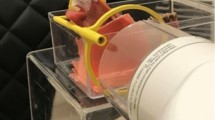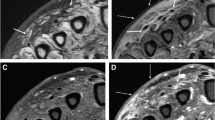Abstract
The problem of identifying the wounding agent in forensic cases is recurrent. Moreover, when several tools are involved, distinguishing the origin of lesions can be difficult. Scanning electron microscopy (SEM)/energy dispersive X-ray analysis (EDS) equipment is increasingly available to the scientific and medical community, and some studies have reported its use in forensic anthropology. However, at our knowledge, no study has reported the use of SEM-EDS in forensic cases involving glass tools, whether in case reports or experiments. We performed an experimental study on human rib fragments, on which we manually created wounds using fragments of window and mirror glass. SEM-EDS was executed on samples without any further preparation on low vacuum mode, then on the same samples after defleshing them completely by boiling them. Window and mirror glass particles were detected on experimental wounds. Both had silica in their spectra, and the opaque side of the mirror contained titanium, allowing for their identification. Boiling and defleshing the bone samples involved a loss of information in terms of the number of wounds detected as positive for glass particles and in the number of glass particles detected, for both window and mirror glass. We suggest the analysis of wounds with suspected glass particles using low vacuum mode and with no defleshment by boiling.


Similar content being viewed by others
References
Saverio Romolo F, Margot P (2001) Identification of gunshot residue: a critical review. Forensic Sci Int 119:195–211
Dalby O, Butler D, Birkett JW (2010) Analysis of gunshot residue and associated materials—a review. J Forensic Sci 55:924–943
Tillman WL (1987) Automated gunshot residue particle search and characterization. J Forensic Sci 32:62–71
Wakely J (1993) The uses of scanning electron microscopy in the interpretation of some examples of trauma in human skeletal remains. In: Grupe PDG, Garland DAN (eds) Histol. Anc. Hum. Bone methods Diagn. Springer, Berlin, pp 205–218
Alunni-Perret V, Muller-Bolla M, Laugier J-P et al (2005) Scanning electron microscopy analysis of experimental bone hacking trauma. J Forensic Sci 50:796–801
Alunni-Perret V, Borg C, Laugier J-P et al (2010) Scanning electron microscopy analysis of experimental bone hacking trauma of the mandible. Am J Forensic Med Pathol 31:326–329
Ferllini R (2012) Macroscopic and microscopic analysis of knife stab wounds on fleshed and clothed ribs. J Forensic Sci 57:683–690
Rawson RB, Starich GH, Rawson RD (2000) Scanning electron microscopic analysis of skin resolution as an aid in identifying trauma in forensic investigations. J Forensic Sci 45:1023–1027
Bai R, Wan L, Li H et al (2007) Identify the injury implements by SEM/EDX and ICP-AES. Forensic Sci Int 166:8–13
Vermeij EJ, Zoon PD, Chang SBCG et al (2012) Analysis of microtraces in invasive traumas using SEM/EDS. Forensic Sci Int 214:96–104
Muccino E, Giovanetti GF, Crudele GDL, et al (2015) Characterisation of the weapon used in a patricide by SEM/EDS analysis of a microscopic trace from the object. Med Sci Law 56(3):221–226
Pechníková M, Porta D, Mazzarelli D et al (2012) Detection of metal residues on bone using SEM–EDS. Part I: blunt force injury. Forensic Sci Int 223:87–90
Gibelli D, Mazzarelli D, Porta D et al (2012) Detection of metal residues on bone using SEM-EDS—part II: sharp force injury. Forensic Sci Int 223:91–96
Suzuki Y, Sugita R, Suzuki S, Marumo Y (2000) Forensic discrimination of bottle glass by refractive index measurement and analysis of trace elements with ICP-MS. Anal Sci 16:1195–1198
Kinoshita H, Nishiguchi M, Ouchi H et al (2004) The application of a variable-pressure scanning electron microscope with energy dispersive X-ray microanalyser to the diagnosis of electrocution: a case report. Legal Med 6:55–60
Nzaumvila D, Govender I, Kramer EB (2015) Glass injuries seen in the emergency department of a South African district hospital. Afr J Prim Health Care Fam Med 7(1). doi:10.4102/phcfm.v7i1.886
Rothschild MA, Karger B, Schneider V (2001) Puncture wounds caused by glass mistaken for with stab wounds with a knife. Forensic Sci Int 121(3):161–165
O’Callaghan PT, Jones MD, James DS, Leadbetter S, Evans SL, Nokes LDM (2001) A biomechanical reconstruction of a wound caused by a glass shard — a case report. Forensic Sci Int 117(3):221–231
Wang ZG, Liu KG, Jing M, Pang B (2010) SEM analysis of non-conducting materials under low vacuum conditions. Adv Mater Res 152–153:897–901
Author information
Authors and Affiliations
Corresponding author
Electronic supplementary material
Supplementary Fig. 1
General aspect of a wound performed with mirror implement in SEM after platinium metallization, wound limits are shown with white arrows (a), enlargement of the image shows that the wall is clear cut and smooth and the bottom (white star) without debris. (TIFF 19893 kb)
Supplementary Fig. 2
EDS spectrum of the saw analyzed with carbon tapes. Three types of particles were wound, a first with aluminum and silica (a), a second with chromium (b) and a third with iron (c). (TIFF 17412 kb)
Rights and permissions
About this article
Cite this article
Montoriol, R., Guilbeau-Frugier, C., Chantalat, E. et al. Detection of glass particles on bone lesions using SEM-EDS. Int J Legal Med 131, 1347–1354 (2017). https://doi.org/10.1007/s00414-017-1608-4
Received:
Accepted:
Published:
Issue Date:
DOI: https://doi.org/10.1007/s00414-017-1608-4




